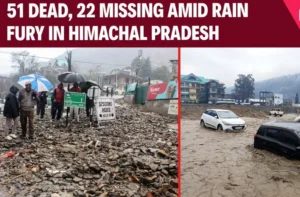The conflict in Gaza has sharply escalated, with Israeli military operations intensifying across the territory and the humanitarian situation reaching unprecedented levels of severity. Medical sources report dozens killed in recent airstrikes, while the United Nations estimates that 500,000 people have been newly displaced since Israel resumed its offensive in mid-March. The blockade on all aid supplies continues, with Israeli officials describing it as a pressure tactic against Hamas, despite growing international condemnation and warnings of “devastating” consequences from the UN and humanitarian agencies.
Ceasefire Negotiations Stall Over Disarmament and Hostage Release
Efforts to broker a new ceasefire have faltered. Hamas rejected Israel’s latest proposal for a six-week truce, which demanded the group relinquish its weapons in exchange for the release of some hostages. Palestinian officials criticized the offer for lacking guarantees to end hostilities or withdraw Israeli forces—key demands for any agreement. Israel, meanwhile, insists that the blockade and military pressure are necessary to secure the release of remaining hostages and to defeat Hamas militarily.
Hamas has signaled willingness to negotiate the release of all captives if Israel agrees to a full cessation of hostilities and a complete withdrawal from Gaza. However, Israeli officials remain firm on maintaining “security zones” within Gaza even after the war, further complicating prospects for a lasting truce.
Mounting Civilian Toll and Infrastructure Destruction
The civilian population continues to bear the brunt of the conflict. Gaza’s Health Ministry reports over 51,000 deaths and more than 116,000 injuries since the war began 18 months ago, with the actual toll likely higher due to thousands missing under rubble. Strikes have targeted residential areas and even the last major functioning hospital in Gaza City, forcing evacuations and leaving the health system in ruins. The Israeli military claims such sites are used by militants, but local officials deny these assertions.
Humanitarian Aid Blockade and International Reactions
Israel’s six-week blockade on all supplies has created acute shortages of food, fuel, and medical essentials. UN agencies warn that the situation is now the worst since the outbreak of hostilities, with 69% of Gaza under evacuation orders and no safe haven left for civilians. French President Emmanuel Macron and other international leaders have called for an immediate ceasefire and the opening of all humanitarian crossings, but Israel maintains that aid restrictions are necessary leverage over Hamas.
Hostage Crisis and Psychological Warfare
The fate of dozens of Israeli hostages remains central to the crisis. Hamas recently claimed it lost contact with the captors of an Israeli-American soldier following an airstrike, while releasing videos warning that continued bombardment could result in hostages’ deaths. Families of hostages and advocacy groups have criticized both Hamas and the Israeli government, calling for a comprehensive deal to secure the release of all captives—even if it means ending the war.
Outlook: No End in Sight
With both sides entrenched in their positions—Israel demanding Hamas’s disarmament and continued military presence in Gaza, and Hamas insisting on a full withdrawal and end to hostilities—the prospects for a negotiated ceasefire remain bleak. Meanwhile, the humanitarian catastrophe deepens, with hundreds of thousands displaced and basic survival increasingly out of reach for Gaza’s civilians.







